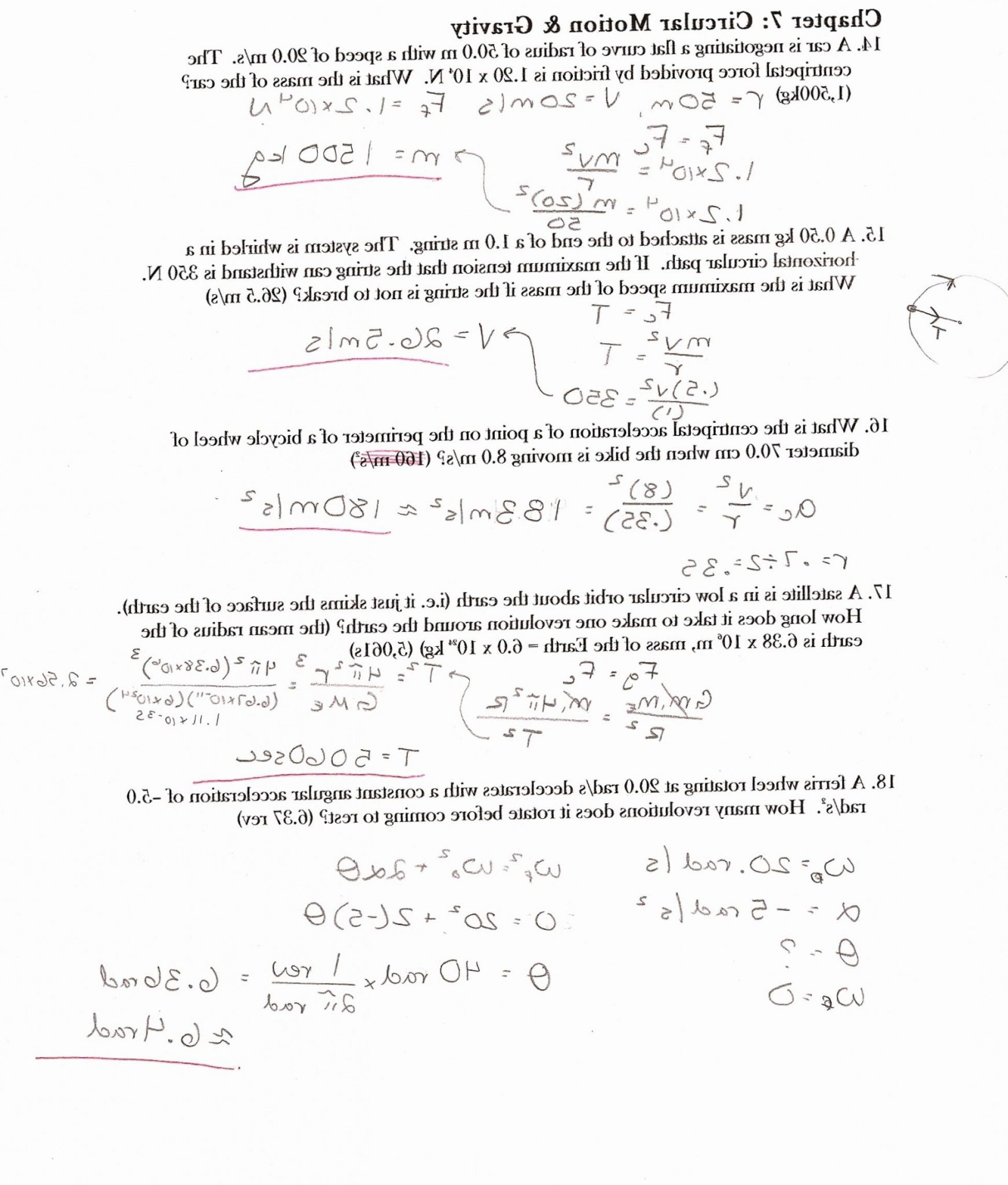
Carbon Cycle Worksheet Answer Key
A diagram shows processes within the carbon cycle connected by arrows indicating the flow of carbon within and between the atmosphere, land, and ocean. Four arrows are labeled. Arrow one points from cows to the atmosphere. Arrow two points from the atmosphere toward the trees. Arrow three points from the soil to an area deep underground.

50 The Carbon Cycle Worksheet Answers
Photosynthesis and the carbon cycle f Now write a sentence using one of the words in the list that you have not used in your answers to a, b, c or d. Your sentence should include some information about the carbon cycle. 1.4 Climate change Exercise 1 This exercise is about comparative adjectives and adverbs. Look at the
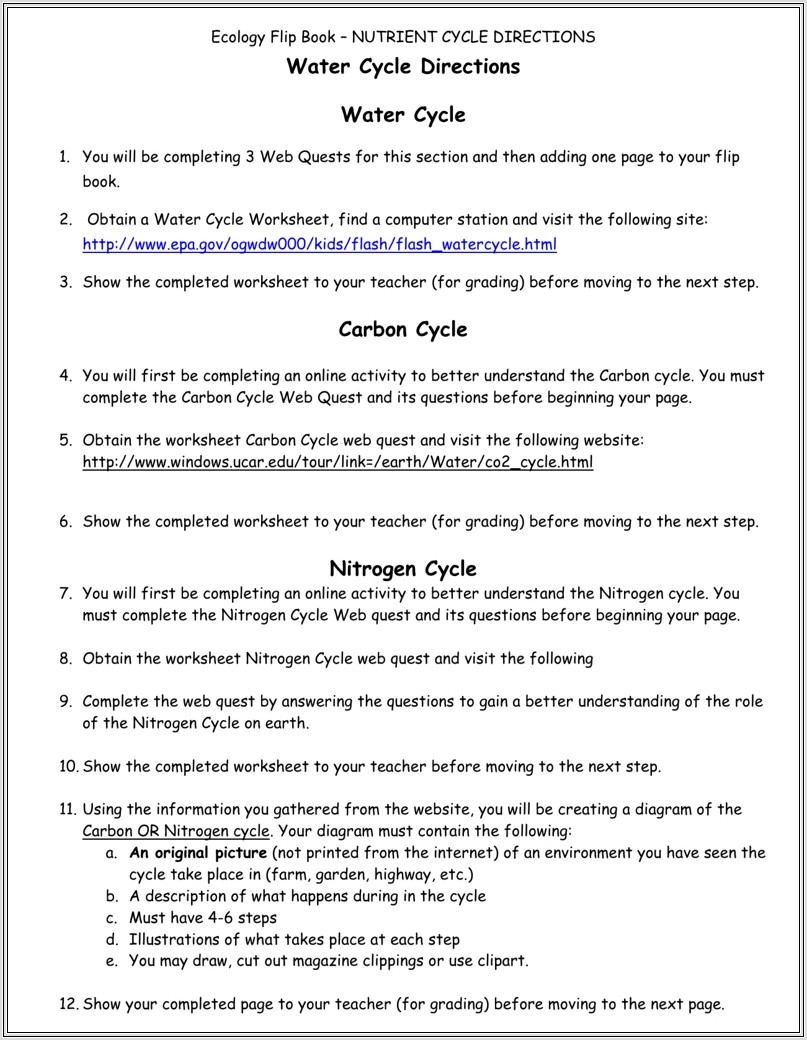
Nitrogen Cycle Worksheet With Answers Worksheet Restiumani Resume
Students are introduced to the concept of energy cycles by learning about the carbon cycle. They learn how carbon atoms travel through the geological (ancient) carbon cycle and the biological/physical carbon cycle. They consider how human activities disturb the carbon cycle by emitting carbon dioxide into the atmosphere. They discuss how engineers and scientists are working to reduce carbon.

Carbon Cycle Diagram Quizlet
Carbon cycle quiz. Carbon moves through the Earth's system in many different ways. The carbon cycle is a visualisation of the processes that move and store carbon between living and non-living things. In this activity, students use the interactive carbon cycle diagram to explore the global carbon cycle and to answer questions in an online or.

Carbon Cycle Worksheet Answer Key
carbon dioxide into the atmosphere when they erupt. •Emphasize that the carbon cycle, like the other biochemical cycles, helps to maintain the balance of life on Earth. Extension: Debate •Have students research and debate the effects of the global buildup of carbon dioxide in the atmos-phere. Answers to Student Worksheet 1. photosynthesis 2.
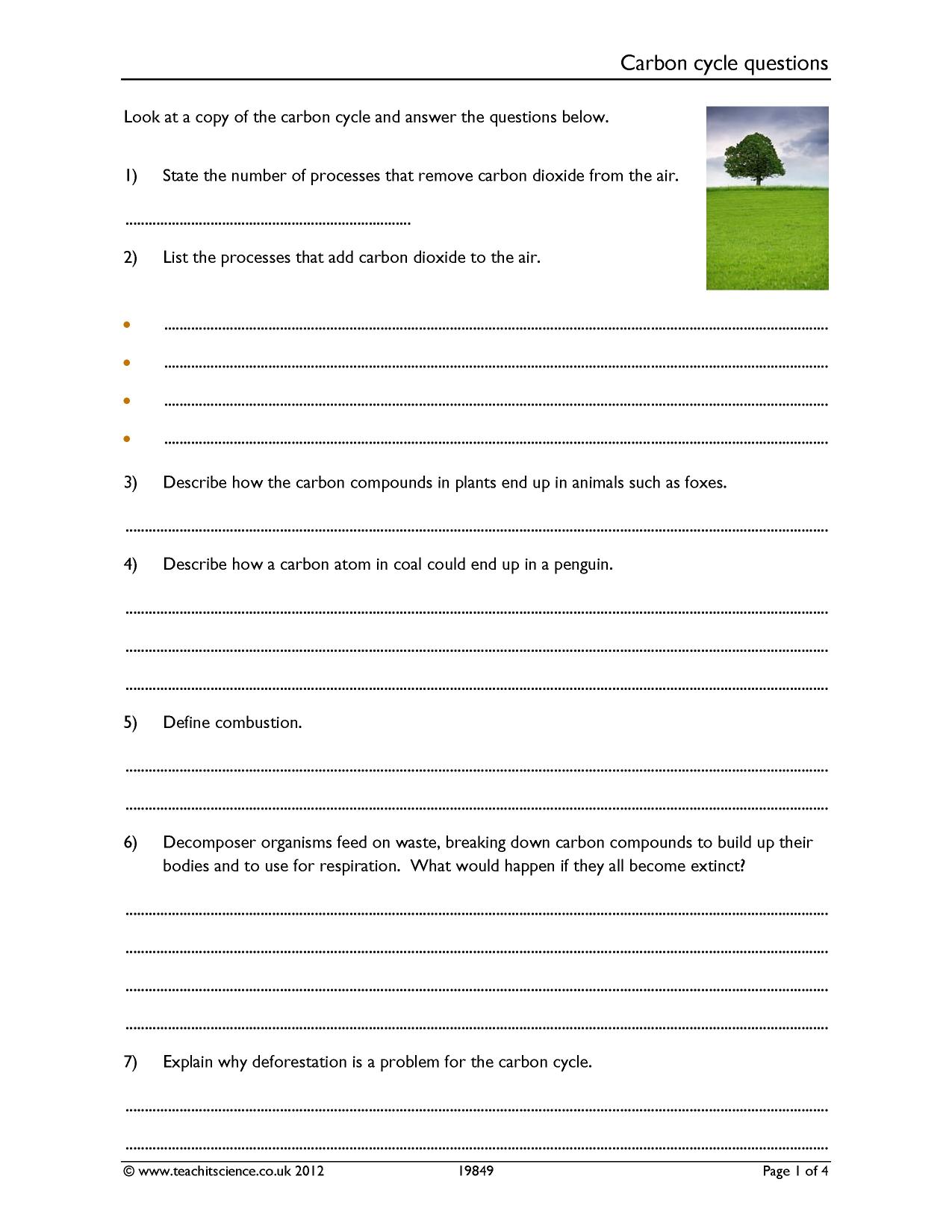
Carbon cycle questions EcosystemsKS4 BiologyTeachit
Explore the carbon cycle with our Carbon Cycle Activity for 3rd-5th Grade. Our Carbon Cycle Worksheet includes a diagram of the carbon cycle, along with five questions to test students' comprehension. The diagram of the carbon cycle provided illustrates the process that carbon goes through. This includes respiration, photosynthesis, combustion, death, fossil fuels, dissolving and evaporation.
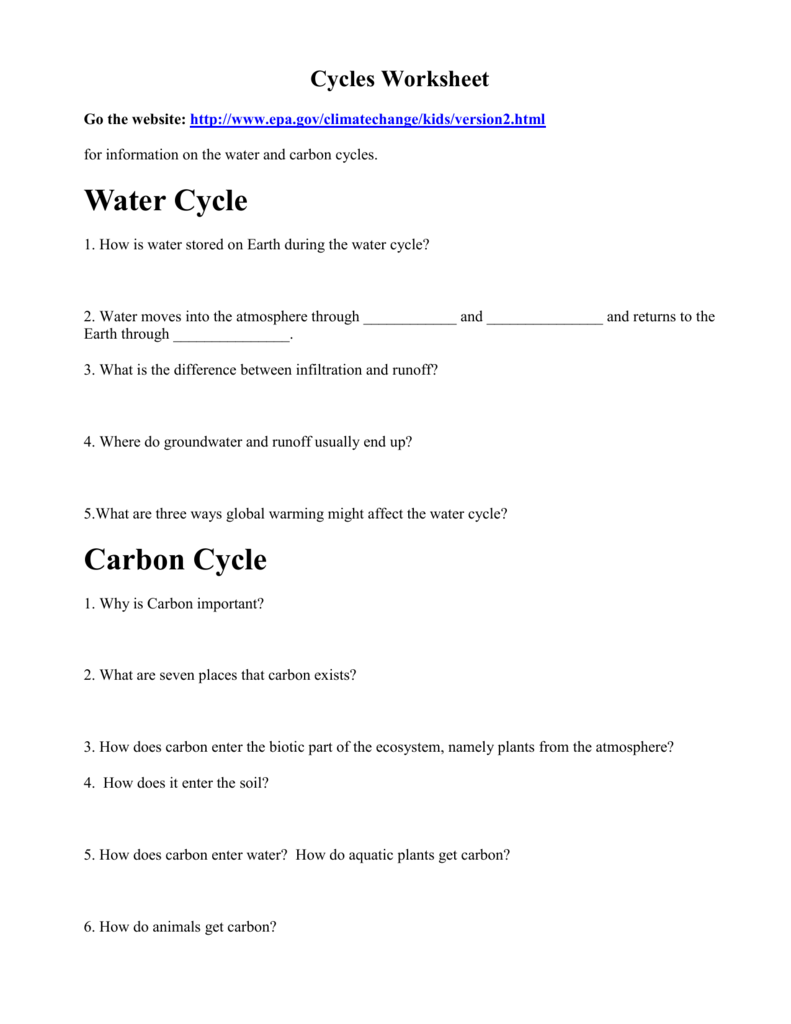
31 Carbon Cycle Worksheet Answers support worksheet
1.3 The carbon cycle 2.5-3 How carbon atoms move between organisms and the air Learner s Book: Questions 1 4 Think like a scientist: How do plants and animals affect carbon dioxide concentration? Activity: Modelling the carbon cycle Workbook: Exercise 1.3, Completing a carbon cycle diagram Teacher s Resource: Worksheets 1.3A C, Building a.

thomasthinktank [licensed for use only] / Cycles of
The carbon cycle describes the movement of carbon atoms across the Earth. Its journey is like a loop that allows it to move from the atmosphere to the ground and from organism to organism. This journey affects life itself. This series of free worksheets looks at how Mother Nature recycles carbon which is a vital element to life.

Review Of Carbon Cycle Worksheet Answers Ideas Alec Worksheet
pdf, 126.27 KB. pdf, 175.99 KB. An A4 poster of the Carbon Cycle for GCSE Biology students to label and learn the key parts of the carbon cycle. This is a free taster of one of the worksheet/posters available from a premium resource I have available for sale on the Carbon Cycle (link below). I have included the answer sheet too for the teacher.

32 Carbon Cycle Worksheet High School support worksheet
Carbon cycle . After discussing the carbon cycle as a class, answer the questions that follow. 7. Give an example of how carbon shows up in the biosphere, the geosphere, the hydrosphere and the.

Carbon Cycle Worksheet Answers —
One possible answer: Carbon moves from biotic to abiotic when organisms exhale as a result of cellular respiration. 3. When does carbon move from an abiotic factor to a biotic factor? Carbon moves from abiotic to biotic when plants take carbon dioxide in during cellular respiration. 4. As a group, draw a picture of the carbon cycle.

Carbon Cycle Worksheet Middle School Pdf Worksheet Resume Examples
Use the carbon cycle activity worksheet to test your children's understanding of the way carbon moves through the environment. In this resource, there is a detailed and colourful diagram of the way that carbon is transferred from different natural locations. The worksheet challenges students to write down the causes for these transitions with questions such as: Can you name two ways that.
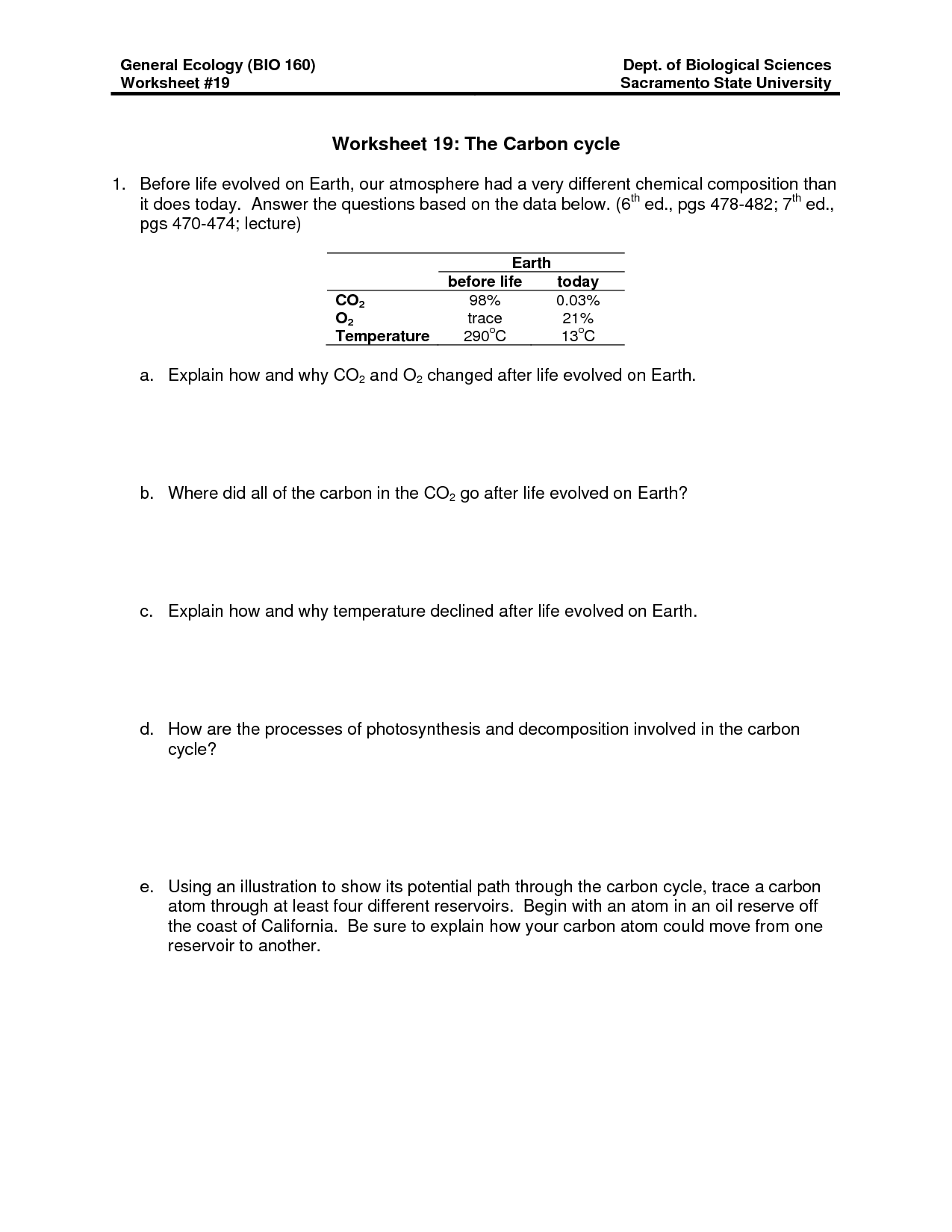
17 Best Images of Nitrogen Cycle Worksheet Middle School Carbon Cycle
Use this worksheet to help your GCSE biology students to learn about the carbon cycle. This worksheet fits closely with the GCSE AQA Ecology unit of work, as well as the Edexcel iGCSE Ecology and Environment unit of work and the OCR Community Level Systems unit of work.
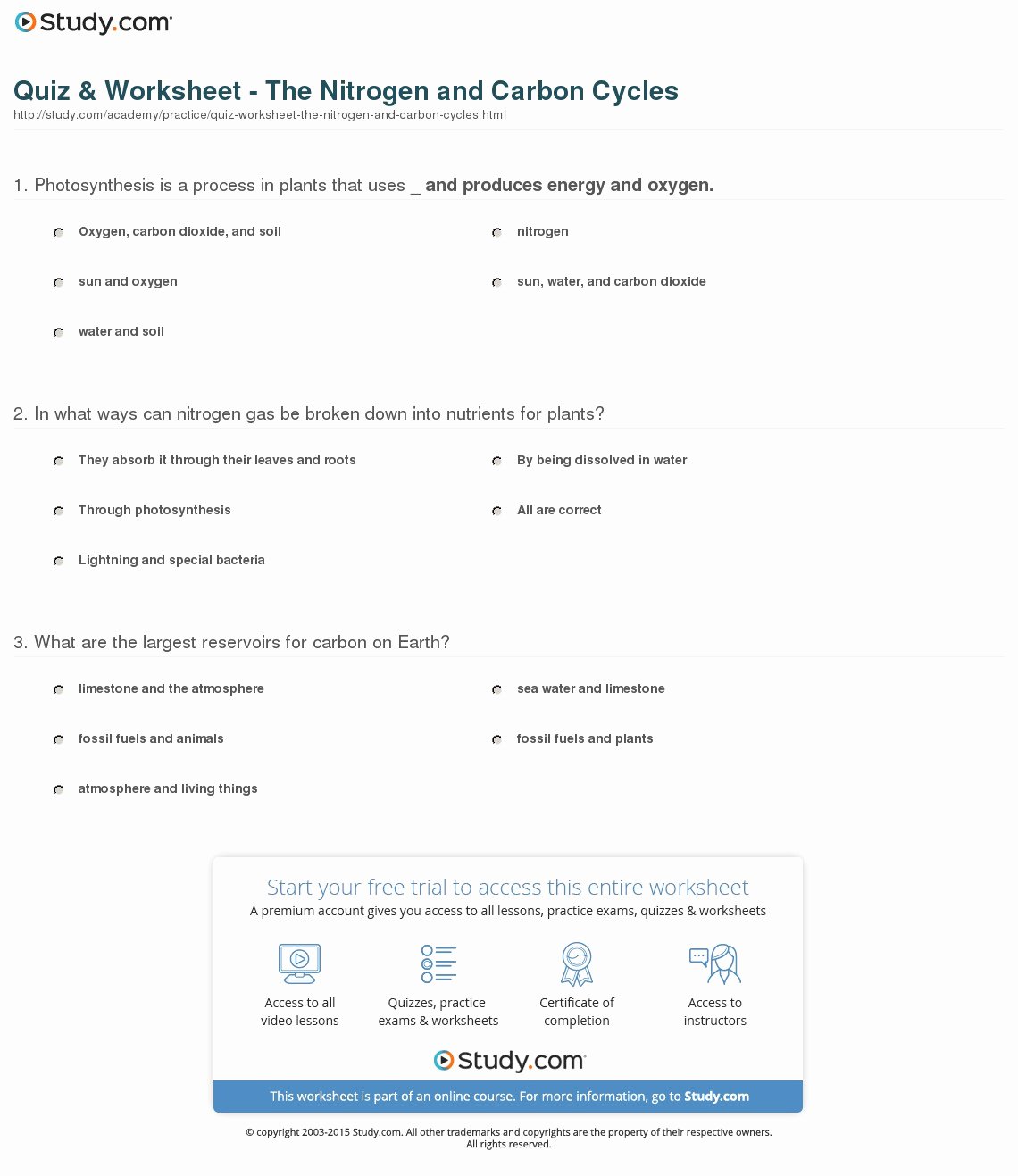
50 The Carbon Cycle Worksheet Answers
The science in this activity covers the carbon cycle, reservoirs, climate change, climate feedback loops, and human impacts/mitigation. Students use the following datasets in this activity: Lesson 1 uses the amounts of (flux and non-flux) carbon from climate.gov and energy.gov; Lesson 2 uses NOAA atmospheric carbon concentrations from sites across the US, as well as sea-level rise projected.
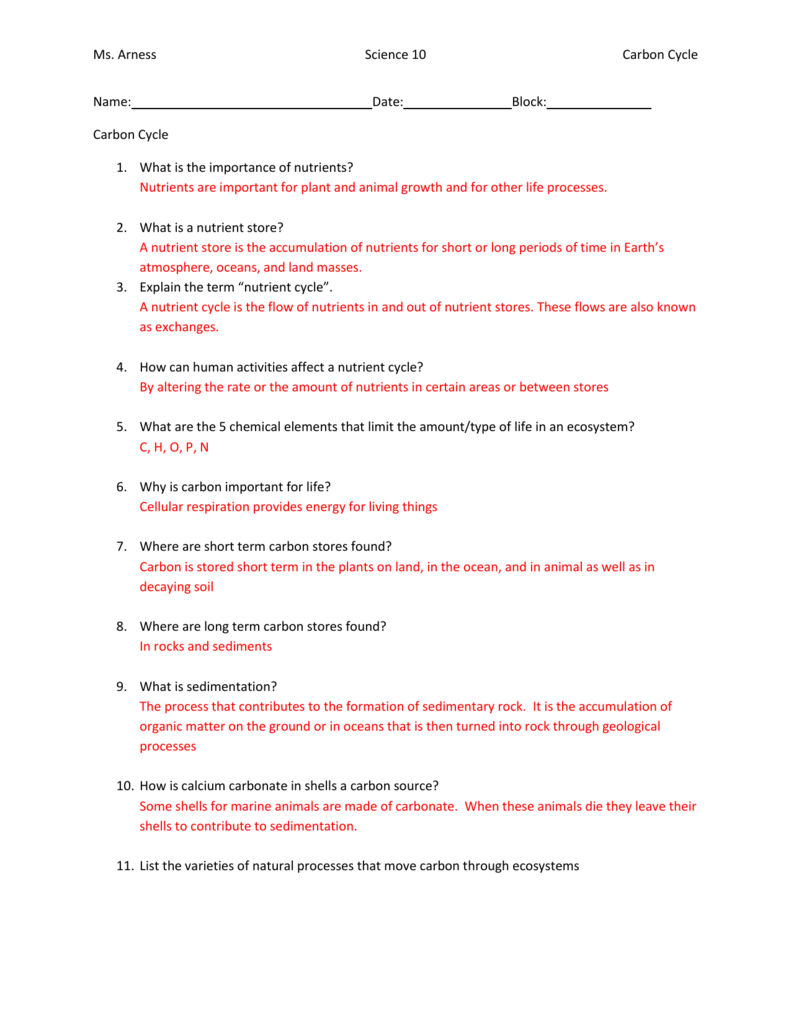
The Carbon Cycle Worksheet Answers
Worksheet 1 rksheet The Carbon Cycle Reteaching SkillsReteaching Skills Use with Chapter 2, Section 2.2 1. What is the process by which plants convert carbon dioxide into energy-rich carbon compounds? 2. Explain what can happen over millions of years to the carbon compounds in organisms that die and decompose. 3.
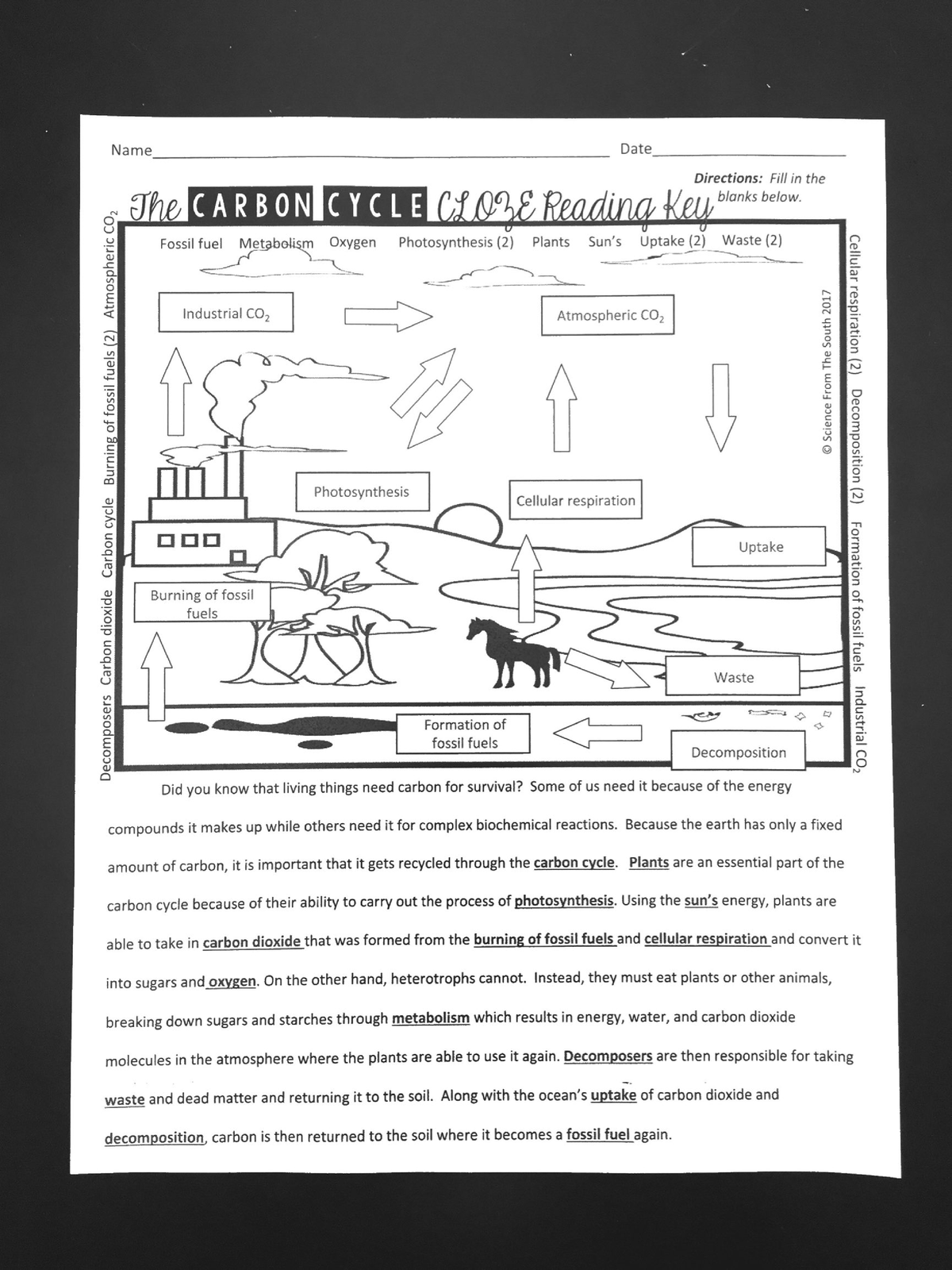
Carbon cycle worksheet answer key 1 Studocu
Carbon Cycle Page 3 Natural Carbon Releases into the Atmosphere Carbon is released into the atmosphere from both natural and man-made causes. Here are examples to how nature places carbon into the atmosphere. Gases containing carbon move between the ocean's surface and the atmosphere through a process called diffusion.